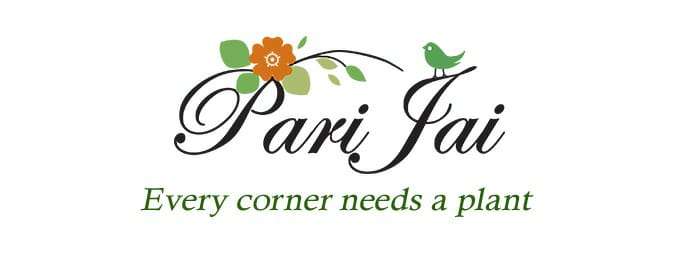What is Sick Building Syndrome (SBS)?
Sick building syndrome is a common worldwide health concern, where people in a building suffer from symptoms of illness or become infected with chronic disease from the building in which they work or reside, but no specific illness or cause can be identified.
History
1. Late 1970s- vague symptoms were reported by people in newly constructed homes, nurseries and offices. It was known as “office illness” in media.
During the first energy crisis in the 1970s, builders and building owners took action to reduce energy consumption in office buildings by increasing insulation, weather stripping doors, building wraps and using insulated double- and triple-pane windows.
In many cases, buildings were renovated to setup windows that couldn’t open, to minimize the escape of heated or cooled air.
2. 1980- NIOSH got 150 internal environmental quality complaints.
3. 1986- WHO coined the term “Sick Building Syndrome” and it also came to notice that 10-30% of newly built buildings in the West had indoor air quality issues.
4. 1989- The Swedish allergy study indicated sick building as a cause of the allergy epidemic.
5. 1990s-
• considerable research was carried out on Sick building syndrome.
• various studies were performed on individual buildings.
• the chemical contents of the material of the building was considered.
• a distrust of the Sick building syndrome concept was raised.
• 52% of complaints concerned sick-making work environments in USA.
6. 1999- a thesis at the Karolinska Institutet in Stockholm 1999 questioned the methodology of previous research.
7. 2005- a Danish study presented the imperfections experimentally which showed that sick building syndrome is neither a coherent syndrome nor a disease which can be diagnosed individually, rather it is a collection of semi related diseases.
8. 2006- the Swedish National Board of Health and Welfare advised in the medical journal Läkartidningen that “sick building syndrome” should not be used as a clinical diagnosis.
How many buildings have this problem?
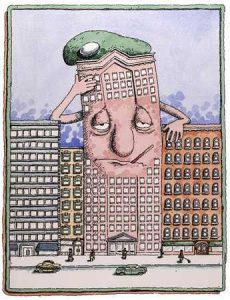
WHO claims, 30% of the buildings suffer from sick building syndrome. We spend 90% of our time indoors due to the busy schedule and don’t have the time to relish nature.
What Causes Sick building syndrome?
1. Indoor contamination (heaters, smoking, etc.)
2. Outdoor contamination
3. Poor ventilation
4. Electromagnetic radiations
5. Biological contamination (pathogens, such as viruses, bacteria, fungi, spores, molds and protozoans)
6. Common products such as
• paint
• insulation
• rigid foam
• particle board
• plywood
• duct liners
• exhaust fumes, various chemical contaminants from indoor or outdoor sources, and biological contaminants can be trapped inside by the HVAC AC system.
Signs and symptoms
The WHO has sorted the reported symptoms into various categories, including:
• mucous membrane irritation (eye, nose, and throat irritation),
• neurotoxic effects (headaches, fatigue, and irritability),
• asthma and asthma-like symptoms (chest tightness and wheezing)
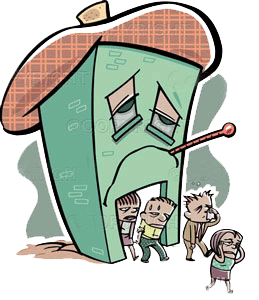 • skin dryness and irritation, gastrointestinal complaints and more.
• skin dryness and irritation, gastrointestinal complaints and more.
• Non-specific hypersensitivity reactions, voice hoarseness, flu-like symptoms
• personality changes, reduction in work efficiency and increase in absenteeism.
A very large 2017 Swedish study corresponded several inflammatory diseases of the respiration tract with an objective proof of damp-caused damage in homes.
Diagnosis
There is no specified medical test to diagnose sick building syndrome. The below given characteristics can help identifying the cause :
1. Symptoms disappear once the affected person leaves the building or home.
2. Other co-workers have similar issues or complaints.
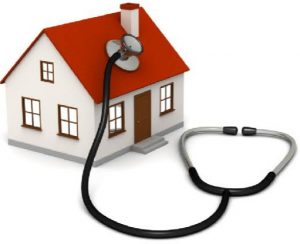
For your convenience write down when and where the symptoms start, as well as when they go away. Also, be very much specific about your symptoms. Your doctor will try identifying conditions that could mimic sick building symptoms. Record them in your diary.
How to resist the effect of illness?
Coming down to health, there are many natural ways of improving it i.e. engaging in physical activities, eating healthy, thinking positive, opting good habits and spending time with mother nature.
General health is a pivotal pillar for quality of life. How would it feel to be able to live in a place that provides,
• 48% increased focus on your work
• 26% increase in your study performance
• 6.4% improvement in the quality of sleep
Most of us do not know the characteristics of Truly Healthy Spaces. These are:
• To think
• To judge
• To memorize
• To understand
Most of these strategies can be accomplished by gardening or greenery, but now days we have zero or very little space due to urbanization, open spaces are captured by high rise apartments. So, now we are left with vertical spaces like walls or roofs.
Sustainable healthy homes and offices
Within the last 20 years there has been renewed interest in the role of designed landscapes as a healing tool to enhance the wellbeing.
Sustainable design seeks to Reduce negative influence on environment, health and comfort of building occupants, thereby improving building performance. The basic objectives of sustainability are to cut down consumption of non-renewable resources, minimize waste and create healthy, productive environment.
How?
Sustainable design principles include the ability to:
• Optimize site potential
• Minimize non-renewable energy consumption
• Use environmentally preferable products
• Protect and conserve water
• Enhance indoor environmental quality
• Optimize operational and maintenance practices
Vertical Gardening for Healthy Living (The Green Lung’s Magic)
Vertical gardening (also known as the Living wall or the Green lung) is a technique used to grow plants on a vertically suspended panel. These unique structures can either be free standing or attached to a wall.
 These living green vertical structures can be as small as picture frame or as massive as thousands of square feet.
These living green vertical structures can be as small as picture frame or as massive as thousands of square feet.
The trend of indoor gardening is increasing tremendously as people are taking interest in beautifying their homes and workplace with different kind of plants, veggies and herbs on a vertical panel.
How can green lungs help?
1. Respiratory Health
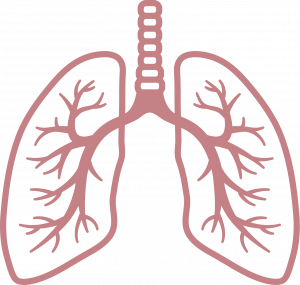 The plants in a living wall filter particulate matter from the air and convert carbon dioxide into oxygen. A green lung extracts 2.3 kg carbon dioxide per annum from the air and produces 1.7 kg of oxygen. With these green lungs you contribute to air purification.
The plants in a living wall filter particulate matter from the air and convert carbon dioxide into oxygen. A green lung extracts 2.3 kg carbon dioxide per annum from the air and produces 1.7 kg of oxygen. With these green lungs you contribute to air purification.
If you opt for an electric air purifier, you never know to how much extent the air is getting purified. Plus there will be an energy cost and it may also emit some radiations. Whereas, plants do not affect or emit anything, says Ar. Hardika who leads Hardika Architects firm in the city of Karnal.
2. Thermal Health
 50% sunlight is absorbed by the plants while 30% is reflected. Thus, it leads to a cooler and more pleasant environment in summers and a warmer indoor climate during winters.
50% sunlight is absorbed by the plants while 30% is reflected. Thus, it leads to a cooler and more pleasant environment in summers and a warmer indoor climate during winters.
3. Safety

Plants naturally contain a lot of moisture. With a green lung you create a natural fire resistant layer on a building or a house. Thus, it acts as a natural safety blanket.
4. Reduces ambient noise
 A green lung acts as a sound barrier to the building. It absorbs 41% more sound than a traditional facade and this means that the indoor environment is much quieter. Also, the indoor voices are less likely to reach outside.
A green lung acts as a sound barrier to the building. It absorbs 41% more sound than a traditional facade and this means that the indoor environment is much quieter. Also, the indoor voices are less likely to reach outside.
5. Extends facade life span
A green lung offers protection from external influences such as the sun, rain, wind and temperature fluctuations and thus, extends the life span of a building by reducing the contraction and relaxation of the concrete material.
6. Adds value to the building
The natural and sustainable appearance combined with a reduction in energy cost, means an increase in the value of your property and it also serves as a landmark.
7. Heightens the feeling of well being
Living and working in a green environment has a positive effect on one’s well health. Gardening offers you relaxation and reduces stress, says Ar. Hardika.
8. Green helps you focus
A healthier environment, cleaner air, and a better state of mind. The knock-on effect of this greener living space is the plants’ ability to improve concentration and focus, particularly important if your home is also your workplace.
9. Reduction in energy cost and utilization
 Green lungs help to reduce the energy costs incurred to adequately ventilate and control building temperature. Reduction in the use of energy will not only cut down on heavy electricity bills but will also help conserving energy for the upcoming generations.
Green lungs help to reduce the energy costs incurred to adequately ventilate and control building temperature. Reduction in the use of energy will not only cut down on heavy electricity bills but will also help conserving energy for the upcoming generations.
Plants in a green lung can remove upto 87% of toxins in air within a period of 24 hours.
Plants are effective in cutting down the amount of VOCs and enhance indoor environment. These VOCs include formaldehyde, benzene, xylene and trichloroethylene.
Green lungs or greenery contribute to improve the mental performance by 26% and quality of sleep by 6.4%.
Not only health benefits, green walls also provide a connection with nature that is missing from our work environment. It is really crucial to maintain this connection in order to stay healthy and active. The desire or the urge to connect with nature is known as biophilia.
How many plants you need to clean the air?
The NASA studies on indoor pollution done in 1989, recommended that 15 to 18 plants in 6 to 8 inch diameter containers each, help to clean the air in an average 1,800 square foot house, which is roughly one plant per 100 square feet of floor space.
Does it really matter?
Yes it does. In case of workplace, healthy employees mean more of efficiency and productivity in work. Healthier working environment can cut back on employee’s health expenditures. Whereas, at home you can up class the health of your family and as well as cut down on health expenditures and food cost by growing your own garden. Greenery will help children focus on studies and will make them more active, productive, and creative.
The man built environment is the major cause of green house gas emissions. The quality of air is changing day by day and so is the health of the population. Greenery is the only solution to this problem. Plants can transform our lives in an unexpected way. There is a need of looking at things from green and positive angles.
What we can do?
We can start from our own place, like our homes, then offices and then community. Improved environment quality can help create jobs and productive employees. The community health is also improved gradually.
We all need to join hands for a green initiative to secure the coming generation’s future as well as improve our health.
Good health is what remains forever.
To conclude, Green lungs i.e. mother nature wins over Sick building syndrome.
To stay updated, subscribe our newsletter.
